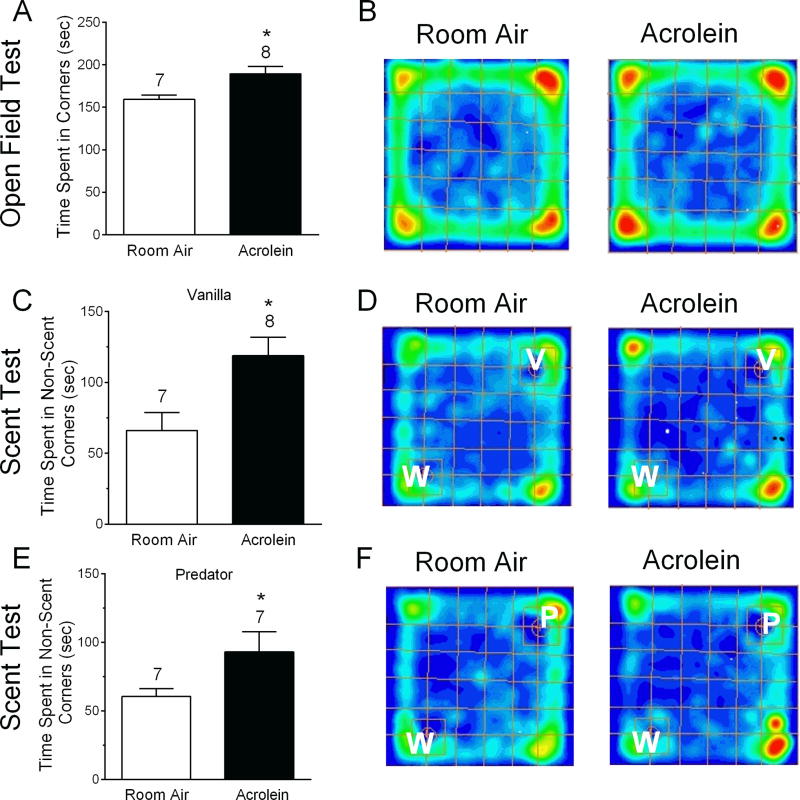Figure 4.
Open field behavior and scent preference changes after acrolein inhalation exposure. In open field testing (A and B), the Time Spent in Corners is increased in acrolein exposed animals compared to room air controls. Representative occupancy maps for individual animals exposed to room air (B, left) or acrolein (B, right) are displayed where warmer colors represent higher occupancy. Scent preferences with water and vanilla (C, D) or water and predator scent (E, F) were determined in separate tests. W, V or P indicate placement of water, vanilla or predator scent in the corners of the open field chamber. Summarized data indicates that Time Spent in Non-Scent Corners is increased in response to pleasant (C) or unpleasant (E) scents in acrolein exposed animals compared to room air controls. The corner is defined as the single most peripheral quadrant. * p < 0.05 compared to room air animals. Number of animals per group is indicated.

